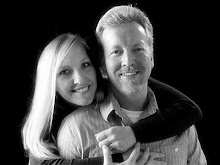 Every now and then, we take a picture that looks too good – almost fake. Now, don’t get me wrong, we do our fair share of Photoshopping. But we use it to enhance images or recreate something that should have happened. Just consider your favorite 2-year-old and you’ll have a pretty good idea of what I mean. But this is different. Take a look at the pic of this little guy and see if you can see what’s wrong.
Every now and then, we take a picture that looks too good – almost fake. Now, don’t get me wrong, we do our fair share of Photoshopping. But we use it to enhance images or recreate something that should have happened. Just consider your favorite 2-year-old and you’ll have a pretty good idea of what I mean. But this is different. Take a look at the pic of this little guy and see if you can see what’s wrong.On the surface, it looks pretty good. Happy kiddo, well lit, good focus and framing and a nice, soft background. Most people would be very happy to receive something like this after their photo shoot. But every time we looked at it, it just seemed that something was wrong. If you haven’t figured it out yet, I’ll reveal the secret in a bit.
 The first time we took a ‘fake’ picture was with a family at an area national park. The trail offered several places to set up shots and we found this nice rock wall that seemed like the perfect location. We sat one of the kids down, fired off a few shots and moved on. When we opened the images up in the computer, we immediately thought this picture looked like it was taken at the local MegaMart Portrait Studio. Nothing seriously wrong other than it looked fake.
The first time we took a ‘fake’ picture was with a family at an area national park. The trail offered several places to set up shots and we found this nice rock wall that seemed like the perfect location. We sat one of the kids down, fired off a few shots and moved on. When we opened the images up in the computer, we immediately thought this picture looked like it was taken at the local MegaMart Portrait Studio. Nothing seriously wrong other than it looked fake. Today, we took another picture that just looked fake. But it’s not. Everything you see happened in the camera. It was the one frame out of a dozen tries where everything just clicked. And, again, all the photography elements are there. Lighting, composition, focus – it all looks good, just fake. Department-store-pull-down-backdrop-of-a-library kind of fake. Never happened, and even grandma knows it.
Today, we took another picture that just looked fake. But it’s not. Everything you see happened in the camera. It was the one frame out of a dozen tries where everything just clicked. And, again, all the photography elements are there. Lighting, composition, focus – it all looks good, just fake. Department-store-pull-down-backdrop-of-a-library kind of fake. Never happened, and even grandma knows it.So what’s wrong with these pictures? The first one is easy and it was a rookie mistake on our part. Look at the light on the little guy's face. It comes from above on the right side of the frame. Now, look at the shadows from the trees in the background. The sun is obviously coming from the left-hand side of the scene. Whoops. Had we simply positioned our flash on the left, the scene would have been believable – maybe even completely organic. But we didn’t, so now it’s obviously manufactured.
The other two pictures are a little more difficult. In fact, Stacey and I have discussed this several times trying to figure out what we did wrong – or right – we’re still not sure how to call it. What we’ve decided on is a pretty subtle deficiency. In both images, the foreground is in sharp focus, well lit and really stands out. We want that. The background is very soft and obviously a fair distance away from the subjects. We usually want that too. What’s missing is something to bridge the gap from foreground to background. At least that’s what we think. We’re open to your suggestions.
That still leaves us with a problem. As photographers, we work hard to create images that are far removed from the discount store versions. And then, this happens. We’re still learning from every shoot and I don’t see that changing anytime soon.


I think what makes each shot look 'fake' is the fact that there is no dappling shadows - it's all perfectly lit, and lit the same on all sides, which doesn't match the background nor look 'natural' in a real world setting like these are.
ReplyDeleteJennifer